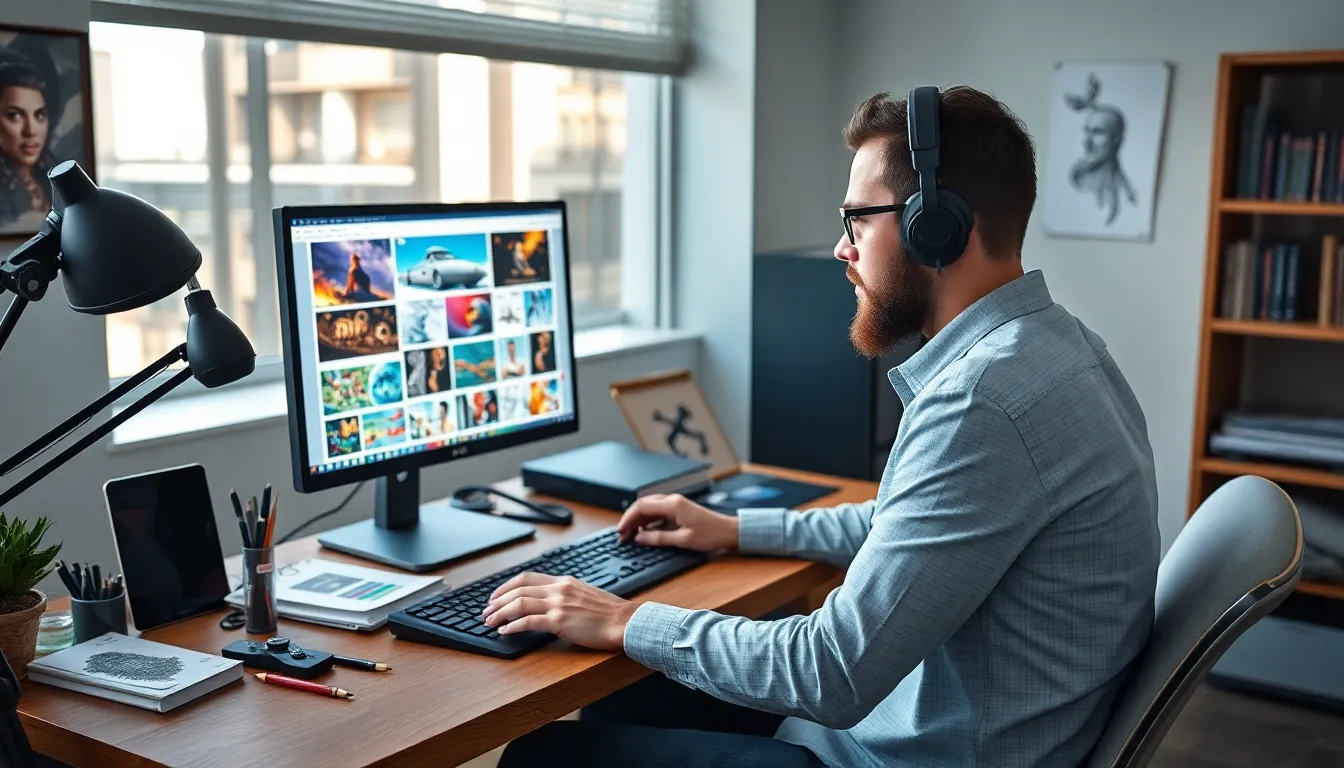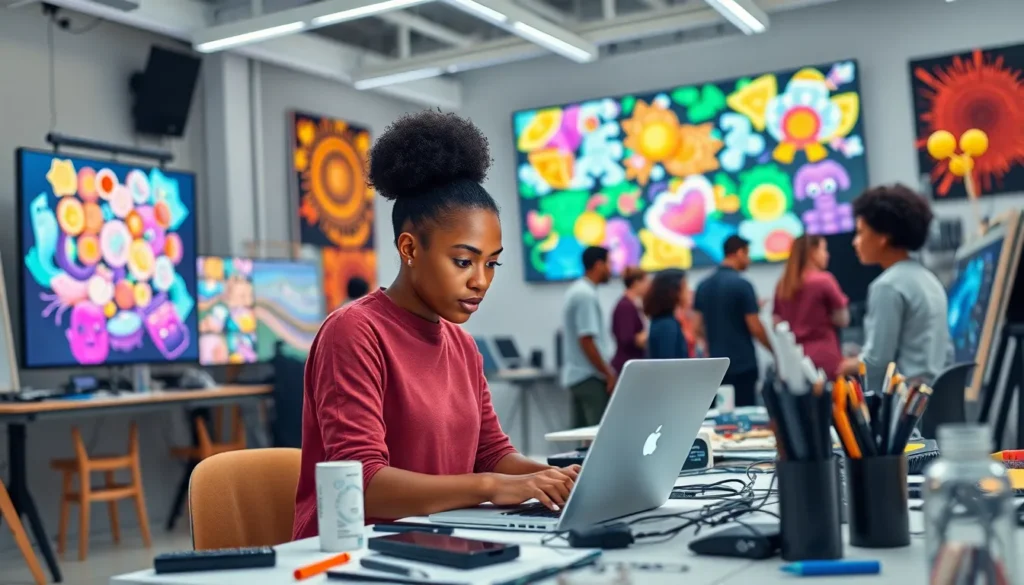In the wild world of digital art and collectibles, minting an NFT is like baking a cake—except instead of flour and sugar, you’re mixing code and creativity. When someone mints an NFT, they’re essentially creating a unique digital token that lives on the blockchain, proving ownership of a piece of virtual magic. Whether it’s a pixelated cat or a stunning piece of digital art, minting transforms ideas into valuable assets.
What Is Minting NFT?
Minting an NFT creates a unique digital asset on the blockchain. This process involves converting digital files, such as images or music, into tokenized forms. Each minted NFT embodies specific attributes that distinguish it from other tokens. Creators upload their digital content to a blockchain platform, selecting the appropriate smart contract for the NFT.
Artists and developers utilize various platforms like OpenSea, Rarible, or Mintable for this purpose. Upon uploading files, they define the NFT’s properties, including its name, description, and royalty structure. After inputting the necessary details, creators initiate the minting process, which assigns a unique identifier to the NFT.
Minting ensures proof of ownership through blockchain technology. Once the NFT is minted, its details become immutable on the blockchain. This aspect enhances security, preventing unauthorized duplication of the asset. As a result, collectors can buy, sell, or trade NFTs with confidence.
Gas fees are often associated with the minting process. These fees, transactions fees associated with blockchain operations, vary depending on the network’s congestion. Creators must factor in these costs when deciding to mint their NFTs.
Minting not only democratizes art creation but also empowers artists. It offers a new revenue stream by allowing them to reach global audiences. Each minting also represents a significant opportunity for innovation within the digital art space.
The Process of Minting NFTs

Minting NFTs involves several essential steps that ensure the creation of unique digital assets. Each stage plays a crucial role in establishing the NFT on the blockchain.
Step 1: Choosing a Blockchain
Selecting a blockchain represents the first step in the minting process. Platforms like Ethereum, Binance Smart Chain, and Tezos offer various features for NFT creation. Each blockchain has distinct advantages, such as Ethereum’s widespread acceptance or Tezos’ lower gas fees. Creators must consider factors like transaction speed, community support, and environmental impact. Making the right choice impacts the minting experience and the NFT’s marketability.
Step 2: Creating Digital Assets
Crafting digital assets forms the basis of minting NFTs. Artists can choose images, music, videos, or 3D models for tokenization. Formats like PNG for images or MP3 for audio provide flexibility in creation. Individuals should ensure their content is original to avoid potential copyright issues. Effective digital assets enhance an NFT’s appeal, making uniqueness a vital aspect. Structuring these assets properly can determine the success of future sales.
Step 3: Minting the NFT
Initiating the minting process finalizes the creation of the NFT. Uploading the digital asset to a chosen platform, such as OpenSea or Rarible, occurs during this phase. Defining key properties, including titles, descriptions, and royalties, adds essential context. Once the details are set, the system generates a unique token identifier. Paying gas fees enables the successful transaction on the blockchain, resulting in a verifiable proof of ownership. After minting, the NFT becomes available for sale, transforming the artist’s work into a tradeable asset.
Benefits of Minting NFTs
Minting NFTs offers various benefits, significantly impacting digital creators and collectors.
Ownership and Authenticity
Ownership of NFTs provides undeniable proof of authenticity. Each minted NFT has a unique identifier on the blockchain, verifying ownership and originality. Artists protect their digital creations from unauthorized duplication. Buyers gain confidence in the scarcity and uniqueness of their acquisitions. This traceable recording of ownership boosts trust among buyers, leading to more secure transactions. Moreover, artists maintain control over their work, ensuring their intellectual property rights remain intact.
Monetization Opportunities
Monetization opportunities expand for creators through NFTs. Artists tap into new revenue streams by selling their digital assets on blockchain platforms. Royalties can be included in smart contracts, allowing creators to earn from secondary sales. This sustainable income model supports ongoing creativity and innovation. Collectors also benefit by investing in rising artists, potentially yielding substantial returns. Overall, minting NFTs fosters a vibrant marketplace that connects artists, collectors, and investors worldwide.
Challenges in Minting NFTs
Minting NFTs presents several notable challenges that creators must navigate.
Environmental Concerns
NFTs often rely on energy-intensive blockchain networks. Ethereum, for instance, consumes significant energy due to its proof-of-work consensus mechanism. This high energy use raises concerns about carbon footprints and environmental impact. Many artists feel pressured to consider eco-friendly alternatives, like Ethereum’s upcoming proof-of-stake transition or alternative blockchains with lower energy demands. The environmental conversation is integral to the NFT landscape, influencing purchasing decisions among eco-conscious collectors.
Market Volatility
Market volatility significantly affects NFT prices. Sudden price fluctuations can deter potential buyers and complicate sales strategies. Factors influencing this volatility include trends, market sentiment, and the actions of key influencers. Notably, the hype surrounding certain collections can lead to inflated prices followed by sharp declines. Artists and collectors should align their expectations with the unpredictable nature of the market, adapting their strategies to fluctuating values. Awareness of these market dynamics is crucial for navigating the NFT space.
Conclusion
Minting NFTs has revolutionized the way digital art and collectibles are created and traded. This process not only validates ownership but also empowers artists to explore new revenue streams and connect with global audiences. The unique attributes of each NFT ensure authenticity and originality, fostering trust in the marketplace.
While challenges like environmental impact and market volatility exist, the potential for innovation and creativity remains strong. As artists and collectors navigate this evolving landscape, minting NFTs continues to offer exciting opportunities for engagement and investment in the digital realm.

